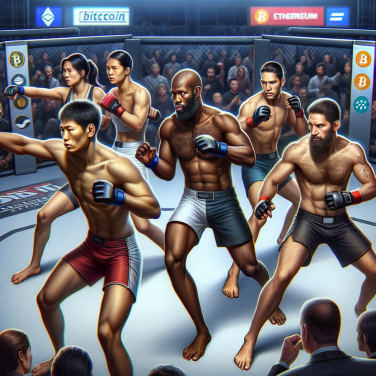From Basement Hobbies to Stadium Events: Tracing the Evolution of Competitive Gaming
Competitive gaming, or esports, has seen a dramatic transformation from humble beginnings to captivating global audiences in massive arenas. This evolution mirrors the broader shift in cultural attitudes towards gaming, illustrating a journey of legitimization and commercialization that has redefined it as a professional sport.
The grassroots of competitive gaming took root in arcades and living rooms, where enthusiasts would gather to challenge one another to games like Pong, Space Invaders, and Street Fighter. These informal competitions, driven by a simple love for the game, were foundational in creating communities that valued skill, strategy, and a bit of friendly rivalry.
As technology advanced, PCs and consoles allowed for more complex and visually compelling games, which in turn catalyzed the organization of more structured competitions. LAN parties became the quintessence of 90s gaming culture; players would haul their bulky hardware to a friend's basement or a local community center to connect, play, and compete through the night, forming tight-knit gaming communities.
The internet boom introduced a vital catalyst for change: online gaming. Multiplayer experiences such as those provided by StarCraft, Counter-Strike, and Quake facilitated real-time competition between players across the globe, eliminating geographical barriers and fostering an international community. As online platforms improved and player bases grew, the stakes of these virtual showdowns began to escalate.
Enter the 2000s and the advent of live streaming technology. Platforms like Twitch and YouTube Gaming opened the doors for gamers to broadcast their gameplay live, setting the stage for vast audiences to watch esports and generating interest beyond the core gaming community. This viewership gave rise to the commercial potential of competitive gaming, drawing the attention of sponsors and advertisers who were eager to tap into a lucrative, engaged young demographic.
The turning point for esports' transition from basements to stadiums was marked by significant investments from major players in the tech and entertainment industries. High-profile competitions like the League of Legends World Championship and The International for Dota 2 began to feature multimillion-dollar prize pools, courtesy of their respective developers and external sponsors. These events often sold out iconic venues such as the Staples Center in Los Angeles and the Mercedes-Benz Arena in Shanghai.
As competitive gaming events grew in scale, production quality followed suit. Broadcasts began to feature pre- and post-game analysis, player interviews, and sophisticated graphics packages that mirrored traditional sports broadcasts. This professional presentation sharpened the image of esports, contributing to its mainstream acceptance.
Read also:
Supermoto Racing: From Dirt Tracks to Asphalt Thrills
Unpacking the Global Phenomenon: How Esports Became a Multibillion-Dollar Industry
Esports, once a niche hobby that brought together gaming enthusiasts in local tournaments, has skyrocketed into prominence, captivating audiences worldwide and cementing itself as a legitimate and lucrative industry. The transformative journey from living room LAN parties to packed arenas for international championships is a tale of technological innovation, cultural shifts, and a redefinition of what constitutes sports and entertainment in the 21st century.
### The Evolution of Esports
The origins of competitive gaming can be traced back to the early days of video games, where players strove to beat each other's high scores at arcades. As technology evolved, the Internet revolution allowed gamers to compete across vast distances, leading to the creation of online multiplayer games and the first virtual competitions.
The turning point for esports came with the advent of live-streaming platforms. These platforms gave gamers a stage to showcase their skills to a global audience. Viewers could tune in from anywhere, fostering a sense of community among fans and participants. Live streaming made it possible for players to become celebrities, and for fans to engage in real-time as they watched their favorite teams and players compete at the highest levels.
### The Infrastructure of Professional Gaming
Today's esports ecosystem resembles traditional sports in many ways. It encompasses professional leagues, teams, coaches, and training regimens designed to hone the skills of individual players. Sponsorships and advertising play major roles, with top-tier companies vying for exposure in a market that reaches millions of engaged supporters, many of whom are in the coveted younger demographic.
The industry has seen the development of specialized esports arenas as well, where large-scale events are held. These facilities are not merely venues; they are high-tech hubs equipped with the latest in gaming equipment and broadcast technology, designed to provide both participants and spectators with an unparalleled entertainment experience.
### The Economic Impact of Esports
The financial growth of esports can be marked by impressive statistics. Market research indicates that the global esports economy has soared, exceeding a billion-dollar threshold with projections suggesting continuous growth. Revenue streams are diverse: media rights, advertising, merchandising, ticket sales, and in-game purchases are just some of the ways the industry generates income.
Sponsorships and partnerships also significantly contribute to the industry's revenue. Brands that traditionally invested in conventional sports are now seeing the value in sponsoring esports events and teams, eager to access the highly engaged and tech-savvy esports demographic.




